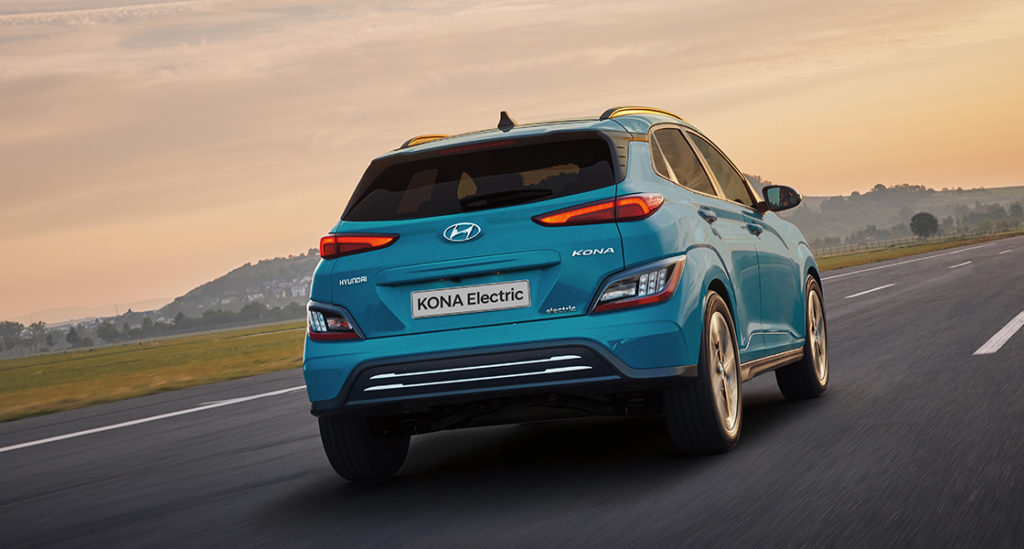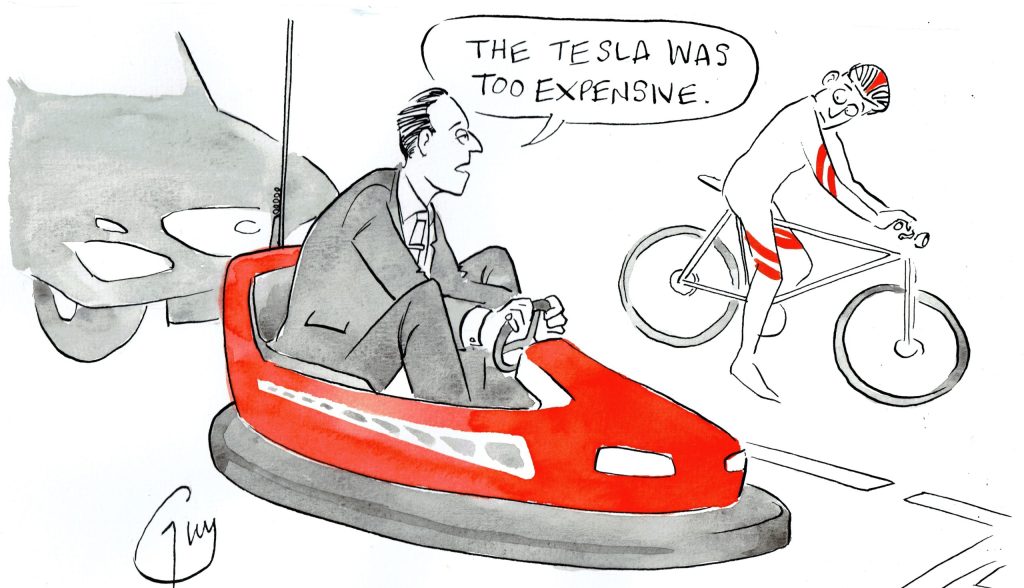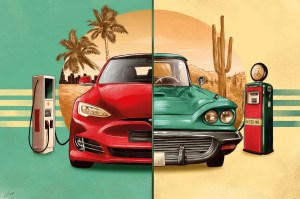I bought an electric car and wish I hadn’t. It seemed a good idea at the time, albeit a costly way of proclaiming my environmental virtuousness. The car cost €44,000 ($53,000), less a €6,000 ($7,200) subsidy courtesy of French taxpayers, the overwhelming majority poorer than me. Fellow villagers are driving those 20-year-old diesel vans that look like garden sheds on wheels.
I order the car in May 2018. It’s promised in April 2019. ‘No later,’ promises the salesman at the local Hyundai dealer. April comes and goes. No car. I phone the dealership. No explanation. The car finally arrives two months late, with no effort by Hyundai to apologize. But I Iove it. It’s quiet, quick and with the back seats down, practical with plenty of room for the dogs. It does insist on sharply reminding me to keep my hands on the steering wheel, even when they’re on it. And once alarmingly slamming on the brakes for no discernible reason.
I’ve installed a charger in my driveway so I plug the car in. It works first time! Then the boss turns on the kettle and every fuse in the house trips. The car is chargeable, but only if you don’t cook, wash clothes or turn on the dishwasher at the same time.
First road trip. Off to the center of France with the horse-obsessed boss to watch a three-day equestrian event. I consult an app that promises an high-speed charger half way to my destination. We arrive and hunt and ultimately find the charger. It doesn’t work. Range anxiety? More like a panic attack.
We make it to the next charger on the freeway with the battery practically empty and my marriage in peril. It works! But subsequently, EDF, the French electric utility, simply shuts down its entire motorway network after discovering the chargers are not just unreliable but dangerous. In Britain, meanwhile, the Department for Transport has, I read, granted an exclusive contract to install rapid chargers at motorway service areas to a company glorying in the name Ecotricity. These turn out to be equally unreliable and very costly to use. Social networks are rapidly bombarded with complaints.
Back in France, after a two-month wait, EDF upgrades my home electricity supply. Rejoice! We can finally cook dinner and charge the car simultaneously. The little Kona is still mostly performing well. It’s fast. I could beat a sports car from a traffic light, except we have none in my corner of La France Profonde. It’s eerily quiet. But much as I attempt to defend my choice, I’m having doubts.
I meet a British couple in the supermarket parking lot, down for the summer, loading groceries into their electric Nissan. How was the trip down? I ask. ‘A nightmare’ of broken charging points, they reply, bitterly. A 10-hour trip took 18 hours, with lengthy stops at low-speed chargers, often miles off the highway.

Given the impossibility of driving much farther than the airport with the freeway charging network still shut down, I resign myself to renting cars for trips beyond a limited radius from the house.
Next, a story appears that a Kona Electric identical to mine has spontaneously combusted in a garage in Montreal, totally destroying the car and the garage itself. The battery, made of lithium, burns for hours. Still no communication from Hyundai, which is said to be investigating, according to Canadian media.
Soon, Konas are bursting into flames all over the world. Continuing silence from Hyundai other than a disingenuous recall notice for a software update. A morning at the dealership waiting for an update to the battery management software. This consists of reducing the range of the car, although that isn’t explained. But it doesn’t work since recalled Konas are continuing to explode. Meanwhile, a second recall. The cars are not just auto-carbonizing but the brakes are apparently susceptible to unpredictable total failure.
New press reports from Korea say Hyundai finally admits there is a hardware problem with the Kona and it is going to replace the batteries in 80,000 of them. But continuing silence from Hyundai France and it’s the same story across Europe. I read that owners in North America are being warned not to park in the garage. Hundreds have filed a class action demanding compensation.
Complaining to Hyundai on Twitter provokes a predictable response. Please direct message us so we can assist you. Translation: please stop posting messages in public so we can try to appease you quietly. I decline to play that game.
Hyundai’s latest stunt is to announce that it’s joined the new Ionity rapid recharge network and will offer a discount to owners. I call Ionity to find out how. They tell me to call my Hyundai dealer. I talk to someone who knows nothing but promises to call me back. I’m still waiting.
The problem with electric cars is that you must suffer to be a pioneer. It’s possibly like buying a gasoline car at the beginning of the 20th century except instead of a man walking in front with a red flag, you need a fire marshal in a diesel with a tow rope.
This article was originally published on Spectator Life.


















